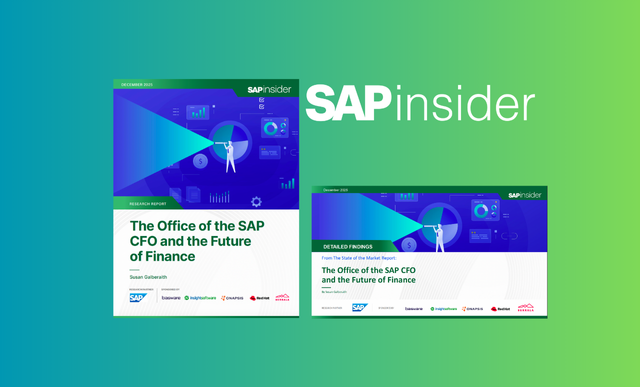As IT professionals and SAP advocates, maintaining the reliability of our existing infrastructure and application environments is job one. And our ability to improve our businesses with the goal of achieving success is just as important after we have achieved reliability.
Let’s be honest, if the business critical systems aren’t reliable, we spend significant time running to the fire to put it out. Only after we achieve consistent reliability can we get to the really interesting work of Digital Transformation.
We all want to increase revenue, decrease costs, gain greater efficiency, automate manual tasks, and improve compliance. We understand the union of technology and business can yield the generational results that careers are made of.
As a tech executive over the last 30 years, I've seen a wide variety of results; both successful projects and those that never came to fruition. In this article I’ve identified three imperatives to bridge that gap that yield success for new innovation.
Problem Solving | Sense of Urgency | Proper Leadership
Solving a problem or seizing an opportunity
All too often IT professionals and our business partners try to drive the purchase of compelling or novel technology or applications without presenting a cogent business case. Without a clear problem to address, it’s difficult to scale out a solution that returns a real business value.
Often IT and Business leaders are given seed or “pilot” funding to try a new solution. Unfortunately, the “POC” often cannot yield results that support further investment. IT solutions can meet a variety of problems, but success can lie in identifying which one the team is trying to address. Pilots or POCs are by nature limited in scope. Further, when there’s nothing at stake, it’s harder to assemble the right team for the project. Identifying a clear business problem that needs a solution is the first component of a successful implementation.
Sense of urgency
A sense of urgency is important because meaningful organizational change cannot occur without the cooperation of affected stakeholders. Intel has a strong cultural element called a Forcing Function; a meeting or a future date when something was expected to be ready for review, which created a sense of urgency. For digital transformation, without a sense of urgency, project commitment, resources, and deadlines languish.
Business leadership’s commitment
A compelling partnership between business leaders and IT professionals who step up and declare their intent to solve real business problems are more likely to see results.
Here are three examples where leadership, problem-solving, and urgency enabled a solution.
- At Intel in the mid-nineties, many of us were unaware of the World Wide Web. Within days, we went from being the trusted consumer and business brand to the opposite - in particular with consumers. Andy Grove, began responding to customers on line regarding the FDIV calculation issue trying to explain what FDIV was and why it was a rare occurrence.
A sense of urgency came over the company to:
- replace any computer motherboard that a customer wanted to be replaced
- build an online presence called Intel.com, which at the time was a novel innovation
- talk to our customers by creating subsites under Intel.com to reinforce the brand promise and resolve any customer complaints
By identifying an obvious problem, introducing a sense of urgency, and working with a leader who drove results, Intel rallied around a coherent action plan. The brand survived and consumer confidence drove growth.
- At HP, the method for moving PCs between Germany to Russia was called into question. Three governments wanted more information. Changes were required or we would have to cease shipping PCs into a growing Russian market. HP’s country manager for Russia learned he could be face serious personal consequences for non-compliance, which created a sense of urgency. Therefore, that country manager negotiated for a new process and evolution of our SAP Supply Chain capabilities to solve the problem. He stated that without a solution, there would be serious repercussions in terms of revenue, jobs, and reputation. We met the need, restored confidence, and received compliance sign-offs from the three governments in record time.
- At Pacific Coast Companies Inc., we learned our distribution competitors could establish a new site selling products within a few weeks of construction and materials being delivered; our benchmark was closer to four months. This was because we were relying on the original SAP GUI from 2001, which was hard to use and train. We also wondered if it was best to be on a single ERP which was SAP, or if we needed a second ERP purpose-built for the distribution industry. Our goal was to improve the time to get a new distribution site up and running.
- Our problem: significantly reduce time to opening a new store to meet/beat our competition’s benchmark
- Our sense of urgency: a decision regarding one or more ERPs to get the best result
- Our leader: the president of the distribution subsidiary who desired to scale his footprint faster
Our leader believed he needed a purpose built ERP to be successful. But a strategic investigation led us to commit to a single instance of SAP. After implementing the new Point of Sales (POS) solution the distribution company achieved three key results: Employee training reduced from four months to four days and we saw an overall 1% improvement in gross margin and a 30% improvement in inventory turns.
Technology leaders can improve their results and reputation by ensuring the Digital Transformation they are attempting to implement has:
- A true business problem rather than technology for technologies sake
- A real sense of urgency driven by a Forcing Function or important deadline
- Ensured a strong partnership exists with a senior leader who is willing to put their "badge on the line" for the effort or investment requested
Projects without these elements run the risk that a result may occur, but not scale or yield the intended benefit expected.






